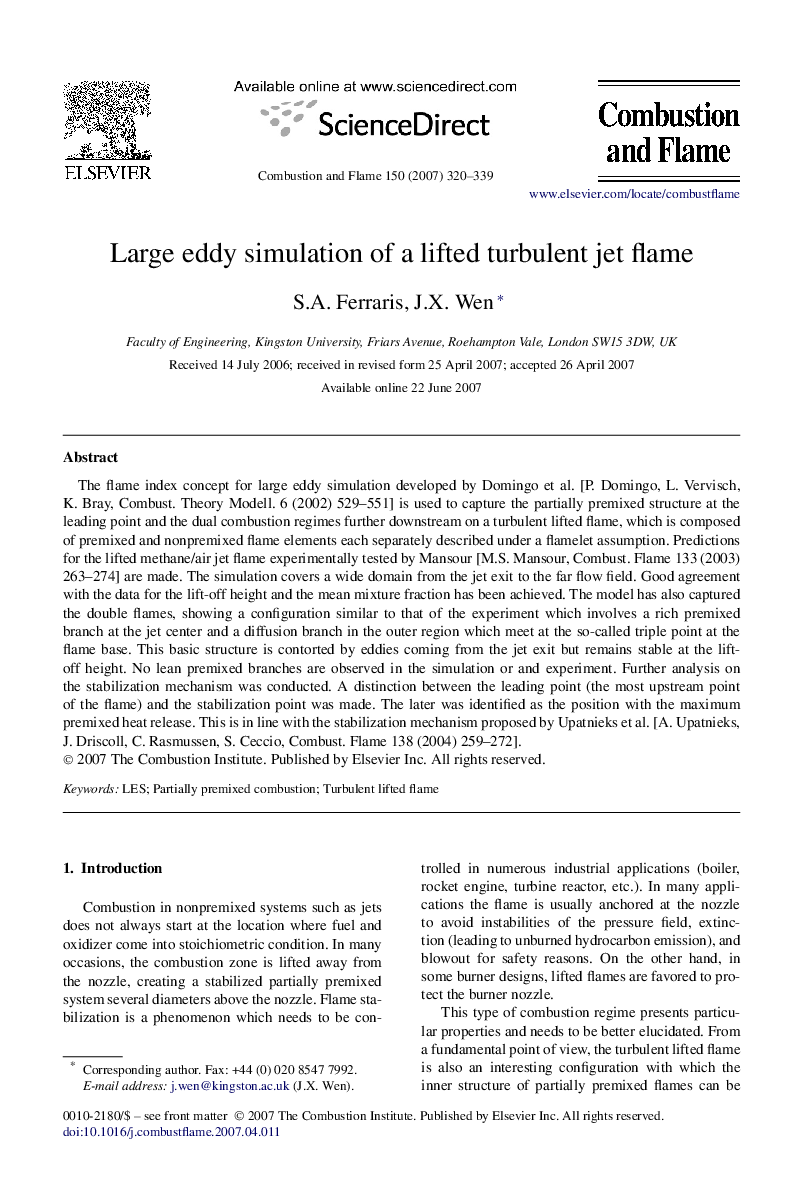| Article ID | Journal | Published Year | Pages | File Type |
|---|---|---|---|---|
| 167142 | Combustion and Flame | 2007 | 20 Pages |
The flame index concept for large eddy simulation developed by Domingo et al. [P. Domingo, L. Vervisch, K. Bray, Combust. Theory Modell. 6 (2002) 529–551] is used to capture the partially premixed structure at the leading point and the dual combustion regimes further downstream on a turbulent lifted flame, which is composed of premixed and nonpremixed flame elements each separately described under a flamelet assumption. Predictions for the lifted methane/air jet flame experimentally tested by Mansour [M.S. Mansour, Combust. Flame 133 (2003) 263–274] are made. The simulation covers a wide domain from the jet exit to the far flow field. Good agreement with the data for the lift-off height and the mean mixture fraction has been achieved. The model has also captured the double flames, showing a configuration similar to that of the experiment which involves a rich premixed branch at the jet center and a diffusion branch in the outer region which meet at the so-called triple point at the flame base. This basic structure is contorted by eddies coming from the jet exit but remains stable at the lift-off height. No lean premixed branches are observed in the simulation or and experiment. Further analysis on the stabilization mechanism was conducted. A distinction between the leading point (the most upstream point of the flame) and the stabilization point was made. The later was identified as the position with the maximum premixed heat release. This is in line with the stabilization mechanism proposed by Upatnieks et al. [A. Upatnieks, J. Driscoll, C. Rasmussen, S. Ceccio, Combust. Flame 138 (2004) 259–272].
